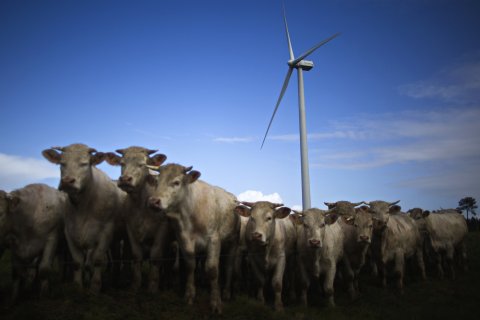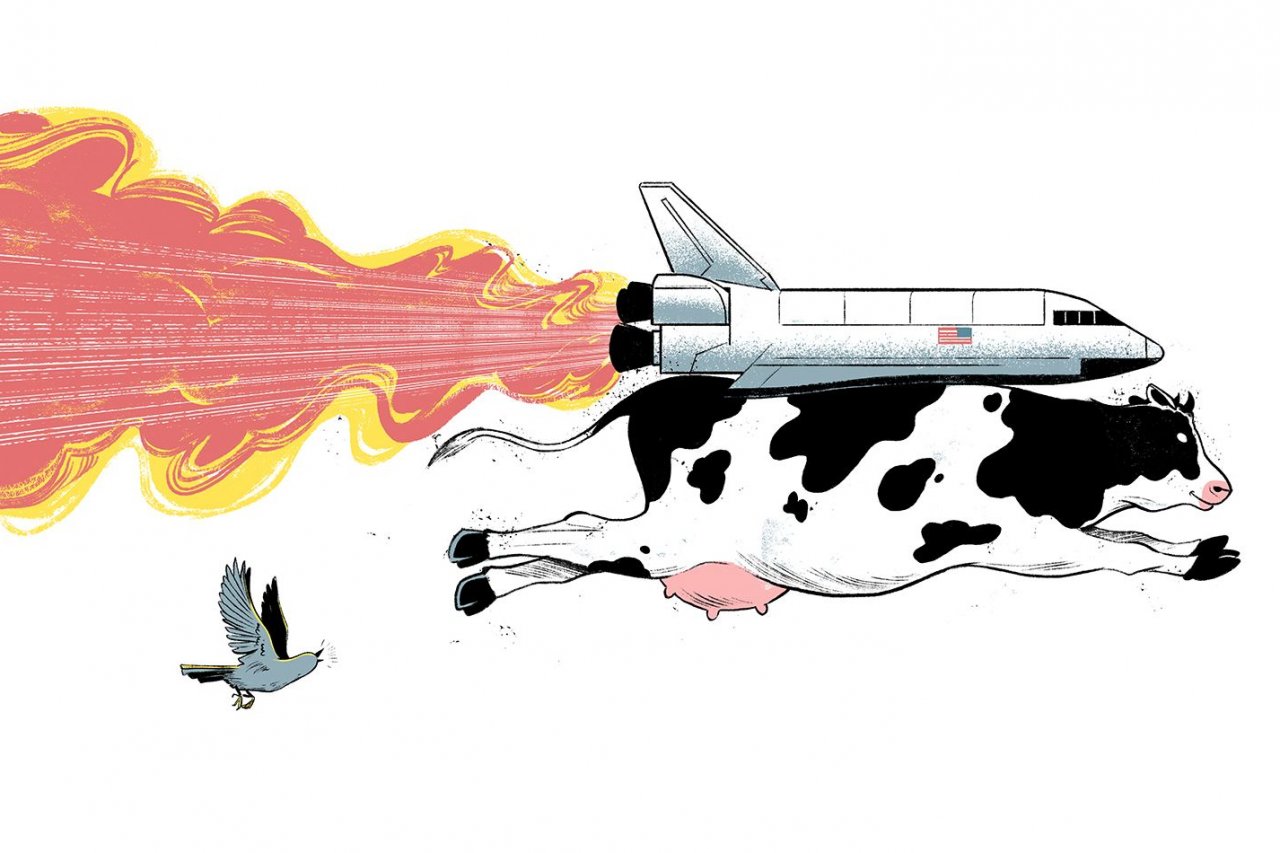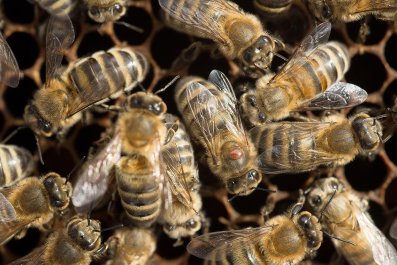Your Greek yogurt creates food waste that could one day be used in jet fuel.
That's right—when Greek yogurt is made, it leaves behind liquid whey, which is the watery remains after protein is strained from milk. A process that mixes this waste with thousands of species of bacteria and some heat transforms the whey into a new material called bio-oil, which could be used in biofuels or additives in livestock feed.
A study published in Joule on Wednesday details how thousands of bacteria feed on the leftovers from making Greek yogurt and then turn it into caproic acid and caprylic acid—or bio-oil. The research is another attempt toward revolutionizing the food production system by creating a "circular economy," when all waste products are recovered for something useful and profitable.

The mechanism to create the bio-oil isn't as unusual as it might sound.
"In a way, it's very similar to our own guts," Lars Angenent, environmental engineer and microbiologist at Cornell University and University of Tübingen, told Newsweek. Live cultures of bacteria in your gut convert food into various types of acids. Researchers did something very similar to create the bio-oil. The process turns the mixture of waste whey from Greek yogurt—made from milk sugars, lactose and fructose, and lactic acid—into bio-oil. The bio-oil is made from caproic acid and caprylic acid.
"We want to recover everything from that material, including the water," Angenent said. "And this would also help the industry be more profitable." In order to move toward a more circular economy, "as a sustainable society, we have to recover everything," he said.

The acids in the bio-oil can be used as "green antimicrobials," which could take the place of antibiotics in livestock. That's key for the health of agricultural animals, and preventing diseases from becoming resistant to drugs. Just last month, the Centers for Disease Control and Prevention announced that an outbreak among humans of Salmonella Heidelberg has continued—mostly as a result of coming into contact with sick dairy cattle infected with the drug-resistant disease.
"The agricultural market might seem smaller, but it has a very large carbon footprint, and turning acid whey into feedstock that animals can eat is an important example of the closed cycles that we need in a sustainable society," Angenent said in a statement. "The fuel market, of course, operates at a lower price, but its demand is virtually unlimited."

The material could have use for fuel in the future as well. Further processing could make the chain of carbon molecules larger—large enough to qualify as "drop-in" biofuels for jet fuels. To make it a biofuel such as this, the bio-oil would need to be further refined for commercial use. Though the technologies for this process exist, according to Angenent, there is still a lot of work to do in order to make it happen.
The process, however, is applicable to making other waste products useful.
"We can also learn more about the nature of the microbiomes and the biology involved," said Angenent, "and start investigating whether this technology can be translated to other waste streams."














